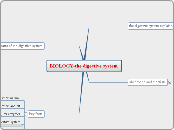BIOLOGY-the digestive system
the digestive system explained
one long tube called thegut
if unravelled-about 9 metres long!
begins with teeth, ends with anus
normally takes food 24-48 hours to pass through digestive system
parts of the digestive system
mouth-contains teeth that begin digestion by breaking up food
salivary glands-secrete amylase which is a carbohydrate enzyme-mucus lubricates the food as it passes down the oesophagus
stomach-has muscular walls which churn up the food and mix it with the gastric juices that the stomach produces
gastric juices-contain protease enzymes and hydrochloric acid
hydrochloric acid-provides tha acidic conditions for a protease enzyme called pepsin to work
rectum-where the faeces are stored before they leave the body via the anus
samall intestine-also produces all three types of enzymes-where digestion is completed and dissolved food is absorbed into the bloodstream-the inner surface is covered in tiny finger-like projections called villi
large intestine-recieves any food that has not been absorbed into the blood.excess water and salts are removed from the food. the remaining solid food turns into faeces.
pancreas-produces carbohydrase, protease and lipase enzymes
gall bladder-is where the bile is stored until it is released into the small intestine via the bile duct.
liver-produces bile, which neuralises stomach acid and helps break down fat.
oesophagus- sometimes called the gullet
absorption and the villus
the small intestine is where the digested food is absorbed into the blood
the small intestine is well designed for absorption
it has a thin lining, a good blood supply and a very large surface area
the large surface area is provided by the villi (single-villus) that extend from the inside of the small intestine wall
the wall of a villus is only one cell thick
it contains a network of cappillaries
blood arriving at the villus to pick up food molecules
the products of protein digestion(amino acids) and carbohydrate digestion (glucose) are absorbed into the capillaries
the products of fat digestion (fatty acids and glycerol) are absorbed into the lacteal
blood leaving the villus, taking the food molecules to the rest of the body
key facts
digestion is the breaking down of large, insoluble molecules into small soluble molecules so that they can be absorbed into the bloodstream through the small intestine wall
the large, insoluble molecules are starch(carbohydrates), protein and fat
this action is speeded up (catalysed) by enzymes
enzymes in the small intestine are also found throughout the digestive system
food is moved through the digestive system by the action of muscles in the gut wall. this is called peristalsis.
